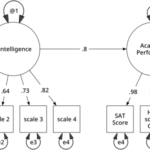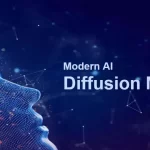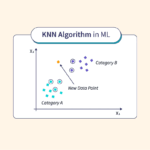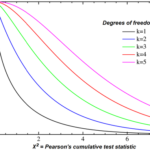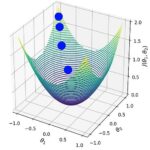Data Science
Data Science combines statistical analysis, machine learning, and domain expertise to extract meaningful insights from data. Explore the latest advancements, techniques, and applications in our Data Science blog posts below.
As a rapidly evolving field, Data Science is at the forefront of innovation in technology and business. From predictive modeling to natural language processing, data science techniques are transforming industries and driving new discoveries.
How does Data Science drive innovation and business growth?
Find the related blogs below to explore how Data Science drives innovation and business growth.
Related Blogs
- Machine Learning Frameworks: The Ultimate Power Guide for Smarter AI Development
 by Durgesh KekareArtificial Intelligence (AI) and Machine Learning (ML) are revolutionizing industries worldwide. From self-driving cars to fraud detection systems, ML applications have become part of our daily lives. Behind these applications are powerful machine learning frameworks—pre-built libraries, tools, and interfaces that make building and deploying ML models faster, easier, and more efficient. Without these frameworks, developers would need to build algorithms from scratch, manage complex data pipelines, and optimize hardware manually. Why Machine Learning Frameworks Matter in AI Development Machine learning frameworks provide the foundation for AI projects. Benefits of Frameworks: Core Features of Modern Machine Learning Frameworks Top Machine Learning… Read more: Machine Learning Frameworks: The Ultimate Power Guide for Smarter AI Development
by Durgesh KekareArtificial Intelligence (AI) and Machine Learning (ML) are revolutionizing industries worldwide. From self-driving cars to fraud detection systems, ML applications have become part of our daily lives. Behind these applications are powerful machine learning frameworks—pre-built libraries, tools, and interfaces that make building and deploying ML models faster, easier, and more efficient. Without these frameworks, developers would need to build algorithms from scratch, manage complex data pipelines, and optimize hardware manually. Why Machine Learning Frameworks Matter in AI Development Machine learning frameworks provide the foundation for AI projects. Benefits of Frameworks: Core Features of Modern Machine Learning Frameworks Top Machine Learning… Read more: Machine Learning Frameworks: The Ultimate Power Guide for Smarter AI Development - Machine Learning Security: The Ultimate Power Guide to Protecting AI Systems
 by Durgesh KekareMachine Learning (ML) has become a cornerstone of modern innovation—driving applications from fraud detection and healthcare diagnostics to autonomous driving and cybersecurity. However, as ML systems gain prominence, they also become prime targets for malicious actors. Unlike traditional software, ML models learn from data, making them vulnerable to manipulation in ways that legacy systems were not. A single poisoned dataset or adversarial input can lead to catastrophic decisions, whether it’s misclassifying a fraudulent transaction as legitimate or causing a self-driving car to ignore a stop sign. This is why machine learning security is not just a technical afterthought—it’s a core… Read more: Machine Learning Security: The Ultimate Power Guide to Protecting AI Systems
by Durgesh KekareMachine Learning (ML) has become a cornerstone of modern innovation—driving applications from fraud detection and healthcare diagnostics to autonomous driving and cybersecurity. However, as ML systems gain prominence, they also become prime targets for malicious actors. Unlike traditional software, ML models learn from data, making them vulnerable to manipulation in ways that legacy systems were not. A single poisoned dataset or adversarial input can lead to catastrophic decisions, whether it’s misclassifying a fraudulent transaction as legitimate or causing a self-driving car to ignore a stop sign. This is why machine learning security is not just a technical afterthought—it’s a core… Read more: Machine Learning Security: The Ultimate Power Guide to Protecting AI Systems - Fraud Detection Machine Learning: The Ultimate Power Guide to Combating Financial Crimes
 by Durgesh KekareFraud has always been a cat-and-mouse game between criminals and organizations. With the exponential growth of digital transactions, fraudsters have become smarter, leveraging advanced tactics to bypass traditional detection systems. This is where Fraud Detection Machine Learning comes into play. Machine learning models can analyze vast amounts of transactional data, spot anomalies, and detect fraud in real time—something rule-based systems alone cannot achieve. This guide will take you deep into how machine learning is revolutionizing fraud detection, the algorithms behind it, real-world examples, and how organizations can build future-proof fraud detection systems. What is Fraud Detection in Machine Learning? Fraud… Read more: Fraud Detection Machine Learning: The Ultimate Power Guide to Combating Financial Crimes
by Durgesh KekareFraud has always been a cat-and-mouse game between criminals and organizations. With the exponential growth of digital transactions, fraudsters have become smarter, leveraging advanced tactics to bypass traditional detection systems. This is where Fraud Detection Machine Learning comes into play. Machine learning models can analyze vast amounts of transactional data, spot anomalies, and detect fraud in real time—something rule-based systems alone cannot achieve. This guide will take you deep into how machine learning is revolutionizing fraud detection, the algorithms behind it, real-world examples, and how organizations can build future-proof fraud detection systems. What is Fraud Detection in Machine Learning? Fraud… Read more: Fraud Detection Machine Learning: The Ultimate Power Guide to Combating Financial Crimes - Big Data Engineer: The Ultimate Guide to Building a Future-Proof Career
 by Durgesh KekareIn today’s digital-first world, organizations are generating data at an unprecedented scale. From eCommerce transactions to healthcare systems, social media interactions, IoT devices, and financial markets, data is flowing at lightning speed. But raw data by itself has no value unless it is structured, processed, and analyzed for insights. This is where the role of a Big Data Engineer comes in. Big data engineers are the architects who design, build, and manage the systems that enable companies to process massive volumes of data efficiently. Without them, advanced data analytics, machine learning, and AI applications would not be possible. Who is… Read more: Big Data Engineer: The Ultimate Guide to Building a Future-Proof Career
by Durgesh KekareIn today’s digital-first world, organizations are generating data at an unprecedented scale. From eCommerce transactions to healthcare systems, social media interactions, IoT devices, and financial markets, data is flowing at lightning speed. But raw data by itself has no value unless it is structured, processed, and analyzed for insights. This is where the role of a Big Data Engineer comes in. Big data engineers are the architects who design, build, and manage the systems that enable companies to process massive volumes of data efficiently. Without them, advanced data analytics, machine learning, and AI applications would not be possible. Who is… Read more: Big Data Engineer: The Ultimate Guide to Building a Future-Proof Career - Structural Equation Modeling: The Ultimate Guide for Researchers and Data Scientists
 by Durgesh KekareIn the modern research landscape, analyzing complex relationships between variables is more important than ever. Traditional methods like correlation and regression provide insights into direct relationships but fail to capture multi-layered and latent structures in data. This is where structural equation modeling (SEM) steps in. As an advanced statistical technique, SEM combines factor analysis and multiple regression into a single framework, allowing researchers to test hypotheses involving both observed and latent variables simultaneously. What is Structural Equation Modeling? Structural Equation Modeling (SEM) is a multivariate statistical analysis technique that enables researchers to examine complex relationships between observed variables (directly measured… Read more: Structural Equation Modeling: The Ultimate Guide for Researchers and Data Scientists
by Durgesh KekareIn the modern research landscape, analyzing complex relationships between variables is more important than ever. Traditional methods like correlation and regression provide insights into direct relationships but fail to capture multi-layered and latent structures in data. This is where structural equation modeling (SEM) steps in. As an advanced statistical technique, SEM combines factor analysis and multiple regression into a single framework, allowing researchers to test hypotheses involving both observed and latent variables simultaneously. What is Structural Equation Modeling? Structural Equation Modeling (SEM) is a multivariate statistical analysis technique that enables researchers to examine complex relationships between observed variables (directly measured… Read more: Structural Equation Modeling: The Ultimate Guide for Researchers and Data Scientists - Diffusion Models: The Ultimate Guide to Generative AI and Its Applications
 by Durgesh KekareDiffusion models have revolutionized the world of generative AI, enabling high-quality image generation, video synthesis, and more. Unlike GANs, diffusion models work by iteratively removing noise from a sample to create realistic outputs.Diffusion models are a class of generative models that have recently become on e of the most powerful tools in artificial intelligence for generating high-quality synthetic data such as images, videos, and audio. Unlike traditional approaches like GANs (Generative Adversarial Networks) or VAEs (Variational Autoencoders), diffusion models work by simulating a gradual process: starting from pure noise and iteratively refining it until a meaningful and realistic sample emerges.… Read more: Diffusion Models: The Ultimate Guide to Generative AI and Its Applications
by Durgesh KekareDiffusion models have revolutionized the world of generative AI, enabling high-quality image generation, video synthesis, and more. Unlike GANs, diffusion models work by iteratively removing noise from a sample to create realistic outputs.Diffusion models are a class of generative models that have recently become on e of the most powerful tools in artificial intelligence for generating high-quality synthetic data such as images, videos, and audio. Unlike traditional approaches like GANs (Generative Adversarial Networks) or VAEs (Variational Autoencoders), diffusion models work by simulating a gradual process: starting from pure noise and iteratively refining it until a meaningful and realistic sample emerges.… Read more: Diffusion Models: The Ultimate Guide to Generative AI and Its Applications - K Nearest Neighbor: The Ultimate Guide to an Intuitive Machine Learning Algorithm
 by Durgesh KekareK Nearest Neighbor (KNN) is one of the simplest and most widely used machine learning algorithms for classification and regression tasks. Known for its simplicity and effectiveness, KNN is a non-parametric, instance-based learning method that works on the principle of similarity. Unlike algorithms like linear regression or logistic regression, KNN does not make assumptions about the underlying data distribution. Instead, it relies on distance measures to make predictions. Why is KNN Important in Machine Learning? KNN plays a significant role in machine learning because: Historical Background of KNN How Does K Nearest Neighbor Work? Here’s how the KNN algorithm works:… Read more: K Nearest Neighbor: The Ultimate Guide to an Intuitive Machine Learning Algorithm
by Durgesh KekareK Nearest Neighbor (KNN) is one of the simplest and most widely used machine learning algorithms for classification and regression tasks. Known for its simplicity and effectiveness, KNN is a non-parametric, instance-based learning method that works on the principle of similarity. Unlike algorithms like linear regression or logistic regression, KNN does not make assumptions about the underlying data distribution. Instead, it relies on distance measures to make predictions. Why is KNN Important in Machine Learning? KNN plays a significant role in machine learning because: Historical Background of KNN How Does K Nearest Neighbor Work? Here’s how the KNN algorithm works:… Read more: K Nearest Neighbor: The Ultimate Guide to an Intuitive Machine Learning Algorithm - Bootstrapping: The Ultimate Guide to Mastering Statistical Resampling
 by Durgesh KekareBootstrapping is one of the most powerful and versatile techniques in statistics and data science. At its core, it is a resampling method that helps estimate population parameters using only sample data. Unlike traditional methods that rely heavily on theoretical distributions, bootstrapping uses the data itself to approximate confidence intervals, standard errors, and other statistical measures. Imagine you have a small dataset and you need to make predictions or derive insights without assuming normality. That’s where bootstrapping shines. It leverages computational power to simulate multiple samples, giving you robust and reliable estimates. Why Bootstrapping Matters in Statistics Statistics often relies… Read more: Bootstrapping: The Ultimate Guide to Mastering Statistical Resampling
by Durgesh KekareBootstrapping is one of the most powerful and versatile techniques in statistics and data science. At its core, it is a resampling method that helps estimate population parameters using only sample data. Unlike traditional methods that rely heavily on theoretical distributions, bootstrapping uses the data itself to approximate confidence intervals, standard errors, and other statistical measures. Imagine you have a small dataset and you need to make predictions or derive insights without assuming normality. That’s where bootstrapping shines. It leverages computational power to simulate multiple samples, giving you robust and reliable estimates. Why Bootstrapping Matters in Statistics Statistics often relies… Read more: Bootstrapping: The Ultimate Guide to Mastering Statistical Resampling - Mastering the Chi Square Test: A Powerful Tool for Data Analysis and Research
 by Durgesh KekareIn the world of data analysis and statistical research, understanding relationships between categorical variables is essential. Whether you’re working in market research, healthcare, education, or machine learning, one statistical method consistently stands out — the Chi Square Test. This test helps you determine whether observed differences in data are due to chance or indicate a real relationship. It’s one of the most widely used statistical tools for hypothesis testing in categorical data analysis. What is the Chi Square Test? The Chi Square Test is a statistical test that measures the association between two categorical variables. It compares the observed frequencies… Read more: Mastering the Chi Square Test: A Powerful Tool for Data Analysis and Research
by Durgesh KekareIn the world of data analysis and statistical research, understanding relationships between categorical variables is essential. Whether you’re working in market research, healthcare, education, or machine learning, one statistical method consistently stands out — the Chi Square Test. This test helps you determine whether observed differences in data are due to chance or indicate a real relationship. It’s one of the most widely used statistical tools for hypothesis testing in categorical data analysis. What is the Chi Square Test? The Chi Square Test is a statistical test that measures the association between two categorical variables. It compares the observed frequencies… Read more: Mastering the Chi Square Test: A Powerful Tool for Data Analysis and Research - Mastering the Independent Variable: A Complete Guide for Data and Research Success
 by Durgesh KekareWhen conducting any research, whether in science, business analytics, or machine learning, one term appears consistently—independent variable. While it may sound like a technical jargon from a statistics textbook, it is one of the simplest yet most powerful concepts in experimental design and data interpretation. In short, the independent variable is the factor you manipulate to observe how it impacts the outcome. Without it, there’s no cause-effect relationship to study. What is an Independent Variable? An independent variable is the input you change or control in an experiment to test its effect on another variable (the dependent variable). It stands… Read more: Mastering the Independent Variable: A Complete Guide for Data and Research Success
by Durgesh KekareWhen conducting any research, whether in science, business analytics, or machine learning, one term appears consistently—independent variable. While it may sound like a technical jargon from a statistics textbook, it is one of the simplest yet most powerful concepts in experimental design and data interpretation. In short, the independent variable is the factor you manipulate to observe how it impacts the outcome. Without it, there’s no cause-effect relationship to study. What is an Independent Variable? An independent variable is the input you change or control in an experiment to test its effect on another variable (the dependent variable). It stands… Read more: Mastering the Independent Variable: A Complete Guide for Data and Research Success - Mastering Gradient Descent: The Ultimate Guide to Optimizing Machine Learning Models
 by Durgesh KekareWhen building machine learning models, one of the biggest challenges is finding the best parameters to minimize prediction errors. This is where gradient descent becomes a core optimization algorithm. Instead of randomly guessing model weights, gradient descent systematically moves toward the minimum of the cost function, adjusting parameters to achieve better performance. Think of it like hiking down a mountain in the fog — you can’t see the entire path, but by taking careful steps in the steepest downward direction, you eventually reach the valley. Why Gradient Descent Matters in Machine Learning Gradient descent is the backbone of many algorithms,… Read more: Mastering Gradient Descent: The Ultimate Guide to Optimizing Machine Learning Models
by Durgesh KekareWhen building machine learning models, one of the biggest challenges is finding the best parameters to minimize prediction errors. This is where gradient descent becomes a core optimization algorithm. Instead of randomly guessing model weights, gradient descent systematically moves toward the minimum of the cost function, adjusting parameters to achieve better performance. Think of it like hiking down a mountain in the fog — you can’t see the entire path, but by taking careful steps in the steepest downward direction, you eventually reach the valley. Why Gradient Descent Matters in Machine Learning Gradient descent is the backbone of many algorithms,… Read more: Mastering Gradient Descent: The Ultimate Guide to Optimizing Machine Learning Models - Mastering Confusion Matrix Jacobian: A Powerful Guide for Smarter Machine Learning
 by Durgesh KekareWhen evaluating the performance of a machine learning classification model, the Confusion Matrix is one of the most powerful tools for visualizing predictions. But when combined with Jacobian matrices, it becomes a strong analytical framework for understanding model sensitivity, optimization, and feature influence. In this guide, we will break down how the Confusion Matrix Jacobian works, why it matters, and how you can use it to make smarter decisions in machine learning projects. Why Confusion Matrix is Essential in Machine Learning A confusion matrix provides a detailed breakdown of True Positives (TP), True Negatives (TN), False Positives (FP), and False… Read more: Mastering Confusion Matrix Jacobian: A Powerful Guide for Smarter Machine Learning
by Durgesh KekareWhen evaluating the performance of a machine learning classification model, the Confusion Matrix is one of the most powerful tools for visualizing predictions. But when combined with Jacobian matrices, it becomes a strong analytical framework for understanding model sensitivity, optimization, and feature influence. In this guide, we will break down how the Confusion Matrix Jacobian works, why it matters, and how you can use it to make smarter decisions in machine learning projects. Why Confusion Matrix is Essential in Machine Learning A confusion matrix provides a detailed breakdown of True Positives (TP), True Negatives (TN), False Positives (FP), and False… Read more: Mastering Confusion Matrix Jacobian: A Powerful Guide for Smarter Machine Learning - Understanding Trees and Types: A Deep Dive into Decision Tree Algorithms
 by Durgesh KekareMachine learning models rely heavily on understanding patterns and relationships in data. Among the most intuitive and interpretable models are tree-based algorithms. These algorithms simulate a decision-making process similar to how humans make decisions. Tree algorithms are not just limited to one model. They encompass several types such as decision trees, random forests, gradient-boosted trees, and more. However, the foundation lies in understanding the basic structure: the decision tree. What is a Decision Tree? A decision tree is a supervised learning algorithm used for both classification and regression tasks. It breaks down a dataset into smaller subsets while at the… Read more: Understanding Trees and Types: A Deep Dive into Decision Tree Algorithms
by Durgesh KekareMachine learning models rely heavily on understanding patterns and relationships in data. Among the most intuitive and interpretable models are tree-based algorithms. These algorithms simulate a decision-making process similar to how humans make decisions. Tree algorithms are not just limited to one model. They encompass several types such as decision trees, random forests, gradient-boosted trees, and more. However, the foundation lies in understanding the basic structure: the decision tree. What is a Decision Tree? A decision tree is a supervised learning algorithm used for both classification and regression tasks. It breaks down a dataset into smaller subsets while at the… Read more: Understanding Trees and Types: A Deep Dive into Decision Tree Algorithms - Mean Squared Error: The Ultimate Guide to Measuring Model Accuracy
 by Durgesh KekareIn the world of data science and machine learning, creating a predictive model is only half the battle. How do you know if your model is actually any good? Measuring its accuracy is a critical step, and one of the most fundamental tools for this task is the mean squared error (MSE). Understanding how to calculate and interpret this metric is essential for anyone looking to build reliable and effective models. Ready to master model evaluation? Dive into our comprehensive guide on statistical analysis techniques and take your skills to the next level. What Exactly is Mean Squared Error? At… Read more: Mean Squared Error: The Ultimate Guide to Measuring Model Accuracy
by Durgesh KekareIn the world of data science and machine learning, creating a predictive model is only half the battle. How do you know if your model is actually any good? Measuring its accuracy is a critical step, and one of the most fundamental tools for this task is the mean squared error (MSE). Understanding how to calculate and interpret this metric is essential for anyone looking to build reliable and effective models. Ready to master model evaluation? Dive into our comprehensive guide on statistical analysis techniques and take your skills to the next level. What Exactly is Mean Squared Error? At… Read more: Mean Squared Error: The Ultimate Guide to Measuring Model Accuracy - Bayesian Classification Explained: A Powerful Tool for Predictive Modeling and Decision Making
 by Durgesh KekareIn the ever-growing world of data science and machine learning, classification algorithms play a critical role in predictive analytics. One of the most widely used and statistically sound methods is Bayesian classification. Rooted in Bayes’ Theorem, this approach provides a structured way of reasoning under uncertainty, making it a popular choice for spam detection, medical diagnosis, sentiment analysis, and more. If you’re exploring intelligent decision-making systems, now’s the time to understand how Bayesian classification can enhance your machine learning projects with both simplicity and power. What is Bayesian Classification? A Probabilistic Approach to ClassificationBayesian classification is a statistical technique based… Read more: Bayesian Classification Explained: A Powerful Tool for Predictive Modeling and Decision Making
by Durgesh KekareIn the ever-growing world of data science and machine learning, classification algorithms play a critical role in predictive analytics. One of the most widely used and statistically sound methods is Bayesian classification. Rooted in Bayes’ Theorem, this approach provides a structured way of reasoning under uncertainty, making it a popular choice for spam detection, medical diagnosis, sentiment analysis, and more. If you’re exploring intelligent decision-making systems, now’s the time to understand how Bayesian classification can enhance your machine learning projects with both simplicity and power. What is Bayesian Classification? A Probabilistic Approach to ClassificationBayesian classification is a statistical technique based… Read more: Bayesian Classification Explained: A Powerful Tool for Predictive Modeling and Decision Making - Artificial Intelligence vs Machine Learning: Understanding the Core Differences and Real-World Impact
 by Durgesh KekareIn today’s rapidly evolving tech landscape, terms like Artificial Intelligence (AI) and Machine Learning (ML) are often used interchangeably, but they’re not the same. While both concepts are deeply connected and frequently overlap, understanding their differences is crucial for businesses, developers, and anyone looking to stay ahead in the digital age. This article offers a clear breakdown of artificial intelligence vs machine learning, explores their strengths, and discusses how they’re reshaping our world. Whether you’re a tech enthusiast or a decision-maker, read on to learn how AI and ML can power innovation in your field. What is Artificial Intelligence? Artificial… Read more: Artificial Intelligence vs Machine Learning: Understanding the Core Differences and Real-World Impact
by Durgesh KekareIn today’s rapidly evolving tech landscape, terms like Artificial Intelligence (AI) and Machine Learning (ML) are often used interchangeably, but they’re not the same. While both concepts are deeply connected and frequently overlap, understanding their differences is crucial for businesses, developers, and anyone looking to stay ahead in the digital age. This article offers a clear breakdown of artificial intelligence vs machine learning, explores their strengths, and discusses how they’re reshaping our world. Whether you’re a tech enthusiast or a decision-maker, read on to learn how AI and ML can power innovation in your field. What is Artificial Intelligence? Artificial… Read more: Artificial Intelligence vs Machine Learning: Understanding the Core Differences and Real-World Impact - Unsupervised Learning: The Silent Power Behind Smart AI Systems
 by Durgesh KekareIn the fast-growing world of artificial intelligence, unsupervised learning stands as one of the most intriguing and essential branches of machine learning. Unlike supervised learning, which relies on labeled data, unsupervised learning empowers machines to find hidden patterns and structures in data without human intervention. From customer segmentation to recommendation systems and anomaly detection, this technique is the backbone of many real-world AI applications. If you’re ready to dive into the realm of autonomous data discovery, read on to explore how unsupervised learning is reshaping industries across the globe. What is Unsupervised Learning? Unsupervised learning is a type of machine… Read more: Unsupervised Learning: The Silent Power Behind Smart AI Systems
by Durgesh KekareIn the fast-growing world of artificial intelligence, unsupervised learning stands as one of the most intriguing and essential branches of machine learning. Unlike supervised learning, which relies on labeled data, unsupervised learning empowers machines to find hidden patterns and structures in data without human intervention. From customer segmentation to recommendation systems and anomaly detection, this technique is the backbone of many real-world AI applications. If you’re ready to dive into the realm of autonomous data discovery, read on to explore how unsupervised learning is reshaping industries across the globe. What is Unsupervised Learning? Unsupervised learning is a type of machine… Read more: Unsupervised Learning: The Silent Power Behind Smart AI Systems - Understanding the Regression Model: Predicting with Precision Using the Regression Line
 by Durgesh KekareIn a world driven by data, making accurate predictions is more important than ever. Whether you’re analyzing business trends, forecasting sales, or identifying patterns in scientific research, a regression model is your go-to statistical tool. At the heart of this technique lies the regression line, a visual representation of how variables relate and interact. If you’re looking to improve decision-making through data, learning how to build and interpret regression models is a must-have skill—get started today and unlock actionable insights from your data. What is a Regression Model? Defining the Tool of PredictionA regression model is a statistical method used… Read more: Understanding the Regression Model: Predicting with Precision Using the Regression Line
by Durgesh KekareIn a world driven by data, making accurate predictions is more important than ever. Whether you’re analyzing business trends, forecasting sales, or identifying patterns in scientific research, a regression model is your go-to statistical tool. At the heart of this technique lies the regression line, a visual representation of how variables relate and interact. If you’re looking to improve decision-making through data, learning how to build and interpret regression models is a must-have skill—get started today and unlock actionable insights from your data. What is a Regression Model? Defining the Tool of PredictionA regression model is a statistical method used… Read more: Understanding the Regression Model: Predicting with Precision Using the Regression Line - Solving Systems of Equations with a Gaussian Elimination Calculator
 by Durgesh KekareIn linear algebra, solving systems of linear equations is a fundamental task with applications across science, engineering, and data analysis. One of the most reliable and systematic methods for solving these systems is Gaussian elimination. However, performing the calculations by hand can be tedious and time-consuming, especially for large systems. That’s where a Gaussian elimination calculator becomes incredibly useful. What Is Gaussian Elimination? Before diving into how a Gaussian elimination calculator works, it’s important to understand the method itself. Gaussian elimination is an algorithm used to solve systems of linear equations. It transforms a matrix into a simpler form—known as… Read more: Solving Systems of Equations with a Gaussian Elimination Calculator
by Durgesh KekareIn linear algebra, solving systems of linear equations is a fundamental task with applications across science, engineering, and data analysis. One of the most reliable and systematic methods for solving these systems is Gaussian elimination. However, performing the calculations by hand can be tedious and time-consuming, especially for large systems. That’s where a Gaussian elimination calculator becomes incredibly useful. What Is Gaussian Elimination? Before diving into how a Gaussian elimination calculator works, it’s important to understand the method itself. Gaussian elimination is an algorithm used to solve systems of linear equations. It transforms a matrix into a simpler form—known as… Read more: Solving Systems of Equations with a Gaussian Elimination Calculator - Understanding Regression: Define Regression in Statistics and Machine Learning
 by Durgesh KekareIn the fields of statistics and machine learning, the term regression holds significant importance. When professionals and students seek to define regression, they are typically referring to a type of predictive modeling technique that estimates the relationships among variables. At its core, regression helps us understand how the dependent variable changes when any one of the independent variables is varied. How Do We Define Regression? To define regression, we must consider it as a statistical method that models and analyzes the relationship between a dependent variable (also known as the outcome or target) and one or more independent variables (also… Read more: Understanding Regression: Define Regression in Statistics and Machine Learning
by Durgesh KekareIn the fields of statistics and machine learning, the term regression holds significant importance. When professionals and students seek to define regression, they are typically referring to a type of predictive modeling technique that estimates the relationships among variables. At its core, regression helps us understand how the dependent variable changes when any one of the independent variables is varied. How Do We Define Regression? To define regression, we must consider it as a statistical method that models and analyzes the relationship between a dependent variable (also known as the outcome or target) and one or more independent variables (also… Read more: Understanding Regression: Define Regression in Statistics and Machine Learning





